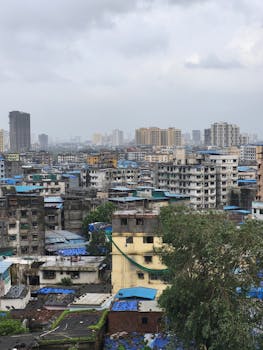
**
India's burgeoning population has long been a subject of intense debate, with concerns ranging from resource scarcity to economic strain. Recently, the Popular Front of India (PFI), a controversial organization, offered a counter-narrative, arguing that India's population surge is not a crisis, but a demographic crossroads. This statement, naturally, has ignited a firestorm of reactions and sparked a crucial conversation about India's demographic future and the PFI's position within it. This article delves into the PFI's perspective, analyzes the arguments for and against their claim, and examines the broader implications of India's population trends.
India's Population Growth: A Nation at a Turning Point
India is projected to surpass China as the world's most populous nation in 2023, a milestone carrying significant weight. This rapid population growth has fueled concerns about overpopulation, straining resources like water, food, and energy. The pressure on infrastructure, particularly in urban areas, is undeniable. Additionally, a large, young population presents both opportunities and challenges regarding employment, education, and healthcare. These are key concerns often raised in discussions about India's population challenges.
The issue is further complicated by the uneven distribution of population density across the country. While some regions experience overpopulation, others face declining birth rates. This disparity highlights the need for nuanced policies addressing regional variations in demographic trends. Understanding the intricate interplay between these factors is crucial to formulating effective strategies.
The PFI's Perspective: A Demographic Crossroads
The PFI's assertion that India's population is at a crossroads, not a crisis, presents a markedly different viewpoint. They argue that the large young population represents a demographic dividend – a potential economic boom fueled by a large working-age population. Their statement emphasizes the potential for economic growth if India invests wisely in education, skill development, and job creation.
The PFI's statement, however, has been met with strong criticism. Many experts and policymakers disagree, highlighting the potential for severe strain on resources and infrastructure if population growth continues unchecked. This underscores the highly contentious nature of this debate.
Analyzing the Arguments: Opportunities and Challenges
The debate surrounding India's population hinges on the balance between opportunities and challenges.
Arguments supporting the "crossroads" perspective:
- Demographic Dividend: A large young population can fuel economic growth if appropriately skilled and employed. This represents a significant potential for boosting the Indian economy.
- Increased Workforce: A larger workforce can increase productivity and contribute to economic development, particularly in sectors like manufacturing and services.
- Innovation and Entrepreneurship: A large population can stimulate innovation and entrepreneurship, leading to the creation of new businesses and jobs.
Arguments supporting the "crisis" perspective:
- Strain on Resources: A rapidly growing population puts immense pressure on already scarce resources like water, food, and energy. This strain can lead to social unrest and conflict.
- Infrastructure Deficit: The existing infrastructure may struggle to cope with a burgeoning population, leading to inadequate housing, sanitation, and transportation.
- Unemployment and Poverty: If jobs are not created at a pace that matches population growth, unemployment and poverty could escalate significantly, leading to social instability.
- Environmental Impact: A larger population inevitably increases the environmental footprint, exacerbating issues like pollution and climate change.
The Role of Policy and Planning
Irrespective of the specific framing – crisis or crossroads – effective population management requires strategic policy interventions. These interventions should include:
- Investing in Education and Skill Development: Equipping the young population with the necessary skills is crucial to harnessing the demographic dividend.
- Creating Employment Opportunities: Job creation programs and initiatives promoting entrepreneurship are essential to absorb the growing workforce.
- Improving Infrastructure: Significant investments in infrastructure, including housing, transportation, and sanitation, are critical to accommodate the expanding population.
- Promoting Family Planning: While respecting individual choices, promoting family planning and access to reproductive healthcare services can help manage population growth.
- Sustainable Development Practices: Adopting sustainable development practices to minimize the environmental impact of population growth is paramount.
Beyond the Debate: The Path Forward
The debate surrounding India's population is complex and multifaceted. Whether framed as a "crisis" or a "crossroads," the reality is that India faces significant demographic challenges that require proactive and comprehensive solutions. The PFI's perspective, while controversial, highlights the potential for leveraging the country's large population for economic growth. However, this potential can only be realized through thoughtful planning, strategic investments, and effective policies addressing the various challenges associated with rapid population growth. Ignoring the concerns surrounding resource strain and infrastructure development is simply not an option. The future of India's demographic landscape depends on navigating this complex terrain with careful consideration and decisive action. The conversation must continue, moving beyond simplistic labels and focusing on concrete strategies for a sustainable and prosperous future. The success of India in managing its population will serve as a crucial case study for other rapidly developing nations facing similar demographic transitions.




















